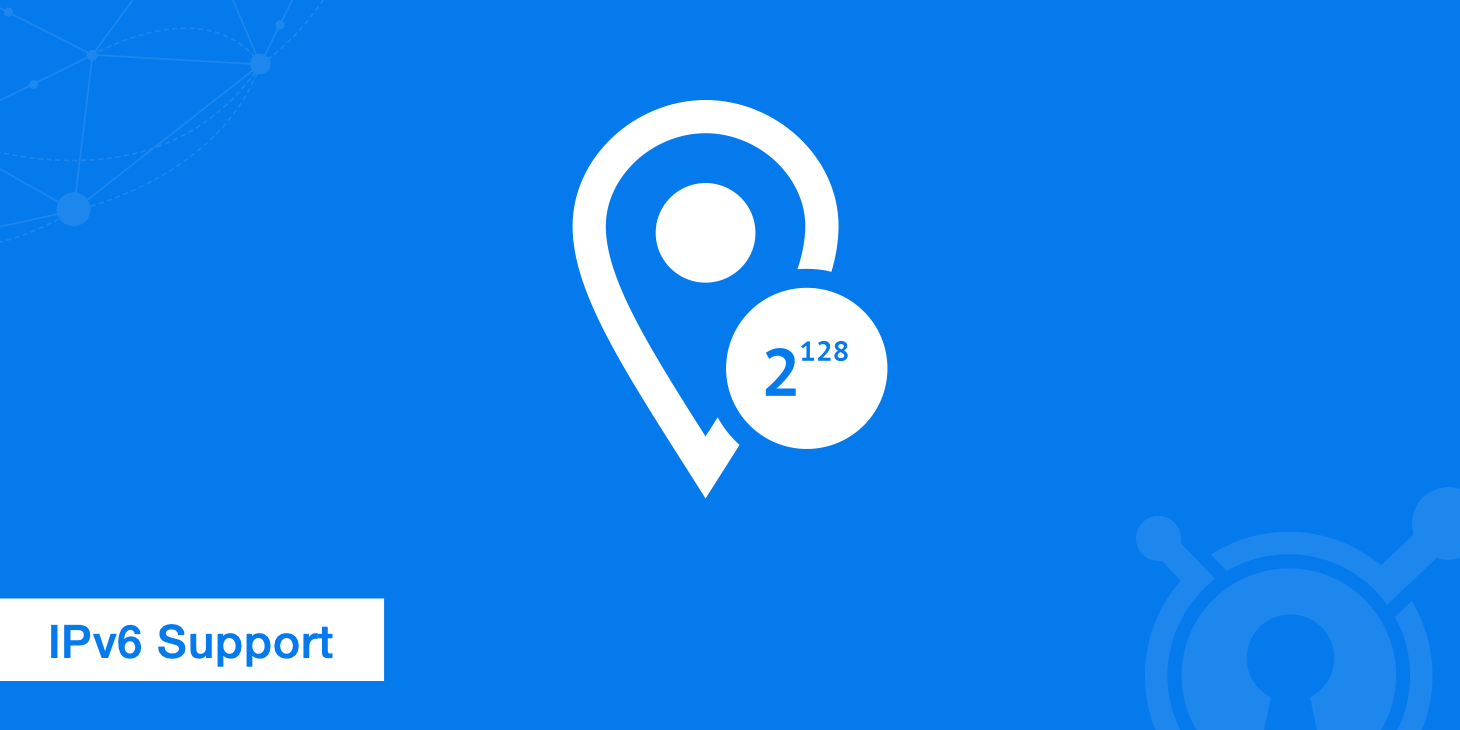KeyCDN Launches IPv6 Support

As the amount of devices connecting online continues to grow, so does our need for IP addresses. That's why the Internet is currently in a transition period of migrating from IPv4 to the newest version of the Internet Protocol: IPv6. Today, we're excited to announce that KeyCDN now fully supports IPv6! This new version of the Internet protocol has been automatically added to all Zones.
What is IPv6?
IPv6 (Internet Protocol Version 6) is the latest internet protocol designed to replace IPv4 due to the network shortage of addresses. With IPv6, addresses are 128 bits (16 bytes) long, as opposed to 32 bits. This makes for a significant difference in the number of available IP addresses between IPv4 and IPv6.
For instance, with IPv4 there was only about 4.2 billion addresses available. However, with IPv6 there are 2 to the power of 128, which if laid out in numbers ends up looking like this:
340,282,366,920,938,000,000,000,000,000,000,000,000
But with billions of devices now able to connect online including, household appliances, cars, IoT devices, and of course the growing number of mobile devices, additional IP addresses are needed now more than ever.
IPv6 was first defined by the Internet Engineering Task Force (IETF) in 1996 in RFC 1883. Instead of using A records like IPv4, it uses AAAA resource records in the DNS to map host names to IPs and was designed with IPSec support in mind. Here is an example of an IPv6 address for www.google.com: 2607:f8b0:4005:804::200e.
With IPv6, leading zeros can be truncated because IPv6 addresses can be written in compressed, uncompressed and fully uncompressed modes.
Additional benefits of IPv6
Besides just the number of addresses that are now available with IPv6, there are also a number of additional benefits such as:
- More efficient routing
- Auto-configuration abilities for easier management. (No more DHCP)
- No more NAT (better transparency for every device)
- No more duplicate IP addresses
- IPSEC is built into IPv6
- Better multicast routing
- Simplified header formats
Moreover, IPv6 has also been shown to deliver content faster in certain cases. For instance, LinkedIn's engineering team published a post that discussed their transition to IPv6. Within this post they mention that IPv6 was performing better than IPv4 for mobile networks.
For some select networks in Europe we are seeing up to 40% and in the US we are seeing up to 10% better improvement over IPv6. Other interesting data we are observing is the TCP timeout on IPv4 over mobile carrier networks is high as 4.6% and IPv6 timeouts are on a much lower side of 1.6%.
IPv6 statistics
The adoption rate for IPv6 has been growing exponentially and is expected to continue to grow quickly over the next few years. As shown in Google's IPv6 adoption graph, the percentage of Google users that are accessing Google over IPv6 is right around 25% as of November 2018.
Additionally, it's also interesting to note which regions and countries have the highest usage rate of IPv6. Google also provides a chart which outlines the Per-country IPv6 adoption rate.
Our own IPv6 findings align quite closely with Google's. Here are a few of the countries with the highest IPv6 adoption rate:
- Belgium: 54.13%
- Germany: 40.17%
- Greece: 36.71%
- United States: 35.05%
- India: 32.91%
- Malaysia: 32.22%
- Brazil: 26.92%
- Vietnam: 22.03%
- United Kingdom: 21.79%
- Finland: 21.87%
- Canada: 20.81%
IPv6 test tools
To test an IPv6 address or hostname, use our Ping IPv6 Test tool. This tool sends out ICMP packets to 10 different locations to see how fast the response is. The faster the ping, the more responsive the connection. Below is an example of our IPv6 tool in action:
If you would rather do an IPv6 ping directly from your command line, you can use one of the following commands:
- UNIX:
ping6 google.com. It might be required to specify the interface with the argument, such asping6 google.com -I eth0(replacingeth0with the appropriate interface). - Windows:
ping google.com -6
Furthermore, there are a couple free tools such as test-ipv6.com and ipv6test.google.com which you can use to test your connection to see whether or not your ISP supports IPv6. Still, a lot of ISPs have yet to adopt IPv6 as this requires large infrastructure changes.
Summary
With the adoption rate of IPv6 growing exponentially year over year, it's only a matter of time before all online-enabled devices are using the latest Internet Protocol. With KeyCDN's IPv6 support now live, you can start taking advantage of the benefits that IPv6 provides and have KeyCDN work in unison with other IPv6-enabled devices and systems. IPv6 is enabled by default for all Zones so there is nothing else you need to do.
If you have any questions about IPv6, feel free to ask in the comments below or open a support request with us directly.